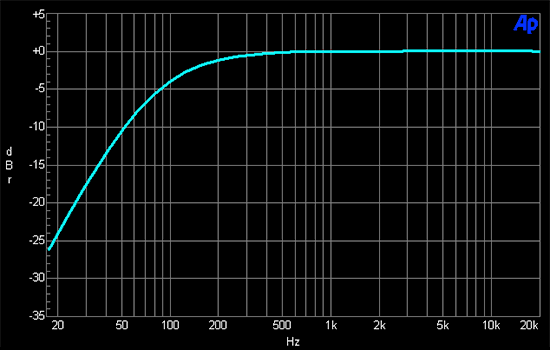While we are entering the slow summer months (Nikon seldom announces major products during that time), I have prepared several guest posts to keep us entertained. Today’s article by Otto Peter is on the audio levels of the Nikon D4 and D800 DSLR cameras (check also Otto’s previous guest post on how to modify the Yongnuo RF603N wireless remote flash trigger to fit non-Nikon flash trigger sources). If you have an interesting idea for a guest post, you can contact me here.
Nikon says nothing about audio parameters of the D800, so I measured some of them. I have my own D800, and I was permitted to record some test signals with a D4 at a local dealer. I did not care about the built in microphone, and used only the external audio input. I also did not concern myself with auto sensitivity. Signals were generated by an Audio Precision System One audio analyzer, recorded on a memory card, extracted from the video stream on a PC, and the digital audio data was either fed back into the System One, or viewed in time and frequency domain in Adobe Audition. While I took reasonable care to provide correct results, I am known to have erred at times – so I beg pardon, should I have got something wrong.
Worst news first – frequency response
There is no bass. The frequency response of the D4 is identical. The lower limit of the D800’s audio band is too high for proper reproduction of most male voices, let alone environmental sounds. This might make sense for the built in microphone, as it somewhat attenuates noise from holding and operating the camera, but even then, I would expect the roll-off to start at a lower frequency. Two cascaded first order high-pass filters, each with a cut-off frequency of 77Hz, fit this curve quite well. I was able to extend the lower 3dB band limit from the camera’s native 120Hz to 30Hz by applying the parametric equalizer of Adobe Audition 3.0.1 twice, bass shelve set to 27Hz, +10.7dB, first order (second order applied once would not work). I did not fiddle with the values too much, but the result is within 1dB of what I tried to achieve.
Input sensitivity and level meters
The maximum amplitude before clipping is 2.83Vpp (peak-to-peak) at sensitivity setting 1, which corresponds to a sine wave of 1VRMS (root-mean-square). This is true for all frequencies – the bass attenuation is done later in the signal chain, and the input amplifier cannot take higher amplitudes. At sensitivity 20, the maximum amplitude before clipping is 1.27mVpp, or 450µVRMS sine. Between sensitivity 1 and 7, the steps are 4.48dB on average, and between 7 and 18 they are 3.08dB. The last two steps are probably meant to be close to 3.08dB as well, but input amplifier noise results in clipping at slightly smaller sine amplitudes and consequently slightly larger steps than expected. Sensitivity settings 6 and 7 are somewhat exotic, as both clearly show signs of AGC (automatic gain control). I did not observe this at the other settings, but I did not spend too much time for that.
Level meters are quite precise, the first yellow bar is 12dB below the red bar, and when the red bar lights up, clipping just begins. Unfortunately, the meters are positioned after the high-pass filter (they are probably derived from the already digitized signal), so they will often not indicate clipping at low frequencies, especially at low sensitivity settings, when the input amplifier clips, but not the converter.
Noise
That’s another problem. Higher sensitivity settings are not useful due to excessive noise. My camera has an SNR (signal-to-noise-ratio) of 90dB at setting 1, but only 28.5dB at 20. That’s about 18µVRMS over the entire signal band (DC to 24kHz). A state-of-the-art audio pre-amplifier chip has something like 0.2µV, which would mean much more useful 67dB SNR. Interestingly, there is less noise at the same sensitivity if the internal microphone is used in a quiet room. While the D4 is better (38dB SNR at 20), it is still far from good.
Distortion
Input signal at 1kHz: 0.7dB below maximum. Amplitudes of some harmonics relative to signal: 2kHz 84.8dB 3kHz 92.0dB 4kHz 108.1dB 5kHz 95.4dB 6kHz 116.5dB 7kHz 101.2dB 8kHz 114.0dB 9kHz 98.6dB 10kHz 118.6dB This results in a THD (without noise) of about 0.007%, which is neither fancy nor bad.
Anti-Aliasing Filter
This is much more important for audio than for video. Frequencies above half the sampling frequency, i.e. above 24kHz, should be completely eliminated, frequencies below that limit should be passed on without attenuation. This is not the case in the D800. The first time attenuation reaches 60dB is at about 26.5kHz, which aliases to 21.5kHz in the sampled signal. Up to 48kHz, attenuation varies between 60dB and 75dB. I did not test further. Not exactly impressive.
Input Impedance
2.2kOhm at 1kHz – this is ok for microphone inputs.




